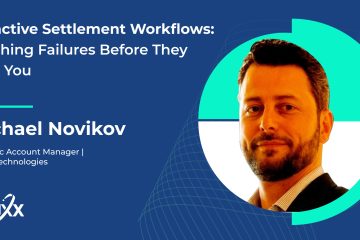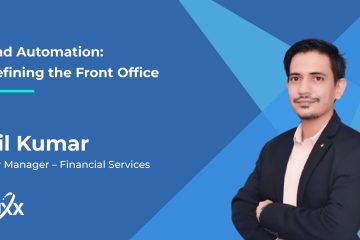In the startup world, ambition is everything. Founders carry big ideas and big burdens, including investors hungry for Returns On their Investments. Between pitch meetings, product roadmaps, and urgent market windows, one pitfall consistently appears: over-promising. Inevitably, that sets the stage for underdelivering – and a whole mess of frustration on all sides.
Despite references to Steve Jobs and his “reality distortion field”, startups, and the dev shops they hire, quickly spin into overly aggressive timelines, underestimated technical complexity, and shifting priorities. The result is a product that comes out late, half-baked, or never materializes at all. This post explores why overpromising is so tempting, how it damages both founders and dev shops and what we can do together to set more realistic expectations.
The Allure of Big Promises
Founder Ambition Meets Investor Pressure
- Founders start with one goal: building value from scratch. A great idea turns into a product concept, attracting attention from early users and potential investors. But once investors step in, the stakes skyrocket. The game shifts from exploring possibilities to proving reality, and more importantly, revenue.
- Suddenly, the founder is no longer just selling a vision. They need to deliver, and fast. This is where dev shops often enter the picture. Hiring a full-time engineering team takes time, but the market won’t wait. Instead, founders turn to external teams to pull together something big – an MVP, a prototype, or a full-scale platform – under tight deadlines and resource constraints.
- Reality Check: Complex features and deep integrations can’t always be crammed into early iterations, especially when speed is critical for market validation. But under pressure, founders (and sometimes their dev partners) make ambitious promises that may not align with realistic execution.
Why Dev Shops Sometimes Oversell
From a dev shop’s perspective, the early-stage uncertainty founders face is often understated. Founders come in wanting a platform that does “just X” without a well-defined, signed-off scope. The dev shop will spend some time scoping this out for timeline and cost, even when agreed upon, the reaction is often: “Well, it doesn’t do X and Y!”
The truth is, that changes in scope are inevitable, especially when a founder doesn’t have a technical co-founder to bridge the gap between vision and execution. What seemed like a simple, well-planned feature set at the start evolves as founders realize what they actually need. This is why often a full-time employee doing re-work feels a lot better than playing a dev shop to “do it properly” this time.
At the same time, dev shops operate in a competitive landscape, often bidding against multiple agencies. To win deals, it’s tempting to reassure founders: “Yes, we can build that quickly.” Sometimes, this confidence comes from relevant experience. Other times, the fear of losing a contract leads to minimizing potential hurdles – like tricky third-party APIs, performance tuning, or design complexities.
In Our Experience:
Over the years, we’ve seen how signing a project with an unrealistic timeline is a gamble that rarely pays off. Even if we land the deal, we risk burning out our team and disappointing the client when deadlines slip. What starts as an agreement for a simple project often turns into chasing moving goalposts – something that could have been avoided with honest conversations upfront and spending more time designing the experience.
When Overpromising Leads to Underdelivering
A Real-World Toll on Projects
The Standish Group’s CHAOS Report consistently finds that a significant number of IT projects fail or face major overruns in scope, budget, or timeline. While exact percentages vary year to year, the trend is clear: unrealistic expectations are a primary driver of project derailment. For startups, a single failed project can mean losing traction at a critical time – often when cash flow and credibility are in short supply.
Founders’ Frustrations and Setbacks
- Investor Relations: Missing a milestone can make investors question your leadership or your dev partner’s competence. When trust erodes, further funding becomes an uphill battle.
- Team Morale: If you’ve assembled an internal team (marketing, product, sales) based on a promised launch date that doesn’t happen, morale can plummet. It’s demoralizing to plan campaigns or new customer onboarding for a product that’s perpetually delayed.
- Opportunity Costs: Each month spent scrambling to fix or finalize a feature is a month you could have spent iterating, gathering user feedback, or improving the overall product.
Dev Shop’s Challenges
- Resource Strain: Overly tight deadlines force juggling developers, designers, and QA resources at the expense of other clients – or risk shipping subpar work.
- Technical Debt: Rushing to meet ambitious deadlines can result in shortcuts – like poor documentation or quick patches that break later – leading to technical debt. Over the long term, this makes your software harder and costlier to maintain or scale.
- Reputation: Consistently underdelivering hurts your brand. One upset founder can sink future referrals, especially in tight-knit startup circles.
Balancing Ambition with Realism
So how do we encourage founders to sell the dream – but also keep the building itself tethered to reality? And how do dev shops set boundaries that protect both parties from disappointment?
1. Embrace Iterative, MVP-Focused Development
An MVP shouldn’t include every feature you’ve ever envisioned; rather, it’s the core functionality that enables real-world validation.
- Founders: Focus on your highest-impact feature set. Prioritize what will differentiate you in the market or provide immediate user value. Keep bells and whistles on a “Phase 2” list.
- Dev Shops: We’ll guide you in creating a product backlog that’s feasible within your timeline and budget. This might mean tough conversations about cutting complex features or deferring them until after launch.
2. Establish Clear, Measurable Milestones
Instead of tying yourself to one big, final deadline, break the development journey into milestones. Each milestone corresponds to a deliverable a working feature, a design prototype, or an integration tested with real data.
- Founders: This milestone-based approach helps you see tangible progress and helps with stakeholder communication (e.g., “By March 15, we’ll have user registration and basic analytics live.”).
- Dev Shops: We appreciate milestone billing because it ensures everyone is aligned. If a certain feature takes longer than expected, we can adjust the following milestone’s timeline before it snowballs into a huge delay.
3. Demand (and Offer) Transparent Communication
Overpromising often thrives in the absence of honest feedback loops. Regular check-ins (weekly or biweekly) with all stakeholders – founders, developers, designers – help spot risks early.
- Founders: Be open to any business changes that might affect the roadmap. If you’re pivoting your market strategy, let us know ASAP so we can realign dev tasks.
- Dev Shops: We commit to flagging issues immediately. If we discover a third-party library is more complicated than we thought, it’s on us to say so early, propose a workaround, and update the timeline.
4. Recognize When to “Push Back”
Good dev shops sometimes say “no” or “not yet.” While it might feel uncomfortable to you as a founder, healthy pushback signals we’re considering real-world constraints.
- Founders: If your dev partner never questions your scope or timeframe, that can be a warning sign. True partnership involves friction constructive friction that refines your product vision into something buildable.
- Dev Shops: Pushing back respectfully can save both parties from a painful meltdown. We’d rather have you succeed with a slightly trimmed feature set than fail by attempting everything at once.
Practical Steps to Avoid Overpromising
Document Assumptions and Dependencies
Create a simple “Assumptions & Risks” document at the start of the project. For instance:
- We assume all user data is in a single database, not multiple data warehouses.
- We assume third-party API X remains stable.
- We assume two full-time developers dedicated to this project.
When these assumptions change, it’s clear that timelines or costs might also need to shift.
Conduct Regular Demos and Stakeholder Reviews
Seeing real progress in demos can defuse tension and highlight missing features. Quick, iterative demonstrations where the founder can click around (even if it’s just design screens), or review designs provide early validation (or correction) before dev time is heavily invested in the wrong direction.
What Happens If You’re Already Overcommitted?
Let’s say you’ve already painted an ultra-optimistic picture for investors, or a dev shop has signed a statement of work that seems borderline unachievable. All is not lost, but it requires a focused approach to improve things:
- Own It: Acknowledge that the initial timeline or feature set was too ambitious.
- Re-scope: Work collaboratively to pinpoint which features are truly essential.
- Pivot the Messaging: Communicate transparently with your stakeholders. They’d rather hear that you’re adjusting timelines for quality’s sake than watching you silently crash and burn.
- Iterate: Focus on shipping a scaled-back version on time or slightly late rather than shipping nothing at all.
From Painful Lessons to Best Practices
We have witnessed firsthand how overpromising can derail a project. In one case, a founder insisted on advanced AI modules in an MVP that had barely defined user flows. By midpoint, it became clear the team was building on assumptions with no data to validate them. We had to pause, bring in a data scientist to evaluate the feasibility and rewrite large chunks of code – resulting in missed deadlines and investor frustration.
On the flip side, we’ve also worked with founders who approached each milestone with a willingness to pivot. They launched an MVP that was minimal yet stable, gathered user feedback, and then smartly invested further. That agile mindset helped them secure additional funding because they had a working product in users’ hands rather than a half-finished monstrosity.
Conclusion: A Partnership Grounded in Realism
At Ionixx, we believe that ambition is the fuel of innovation – but realism is the framework that makes it sustainable. When founders and dev shops align on scope, embrace iterative development, and communicate openly about roadblocks, it’s possible to deliver a product that meets (or exceeds) expectations without burning everyone out.
Ready to explore how we can help you strike the perfect balance between big ideas and tangible outcomes? [Click here to connect]


